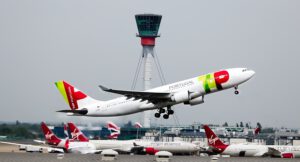How can an aircraft stay in the air?
An aircraft’s ability to stay in the air is determined by aerodynamics and the forces involved. Here are the key concepts that allow an aircraft to fly and stay in the air:
Upward force (lift)
The upward force, also known as lift, is generated by the aircraft’s wings. The wings are designed with a special shape, known as a wing profile, that changes the airflow around them. Adjusting this shape and the angle of attack of the aircraft splits the airflow and creates a difference in pressure between the top and bottom of the wings. This difference in pressure generates an upward force that pushes the aircraft upwards.
Gravity (gravity)
Gravity pulls the aircraft downwards. To stay in the air, the upward force (lift) must be greater than the aircraft’s gravity (weight). This is usually achieved by adjusting the aircraft’s speed and angle of attack.
Propulsion (thrust)
To move forward and generate lift, an aircraft uses propulsion systems such as jet engines or propellers. These systems push the air backwards and generate a reaction force that propels the aircraft forward. By combining the speed of the airflow over the wings with the lift, the aircraft can stay balanced and move forward.
Air resistance (drag)
As the aircraft moves through the air, it experiences air resistance, also known as drag. This is the friction that occurs between the aircraft and the air. Pilots must ensure that propulsion is sufficient to overcome air resistance and maintain a constant speed.
An aircraft stays in the air through the combination of lift generated by the wings, propulsion that moves the aircraft forward and the appropriate adjustments in speed, angle of attack and other flight parameters to maintain a balance between lift, weight, propulsion and drag.
Photo: This is why a plane stays in the air



